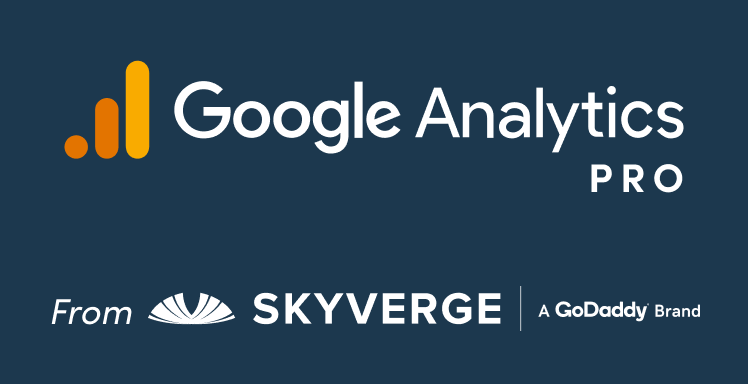Maximize Your Web Site Performance With Google Analytics Monitoring Code
In the digital landscape, recognizing user interactions with your web site is critical for optimization. This tactical application not just educates your choices but also paves the method for an extra interesting customer experience.
Understanding Google Analytics
Understanding Google Analytics is vital for internet site proprietors and marketing professionals intending to maximize their on-line visibility. This powerful tool offers vital understandings right into individual habits, permitting stakeholders to make data-driven choices. By tracking various metrics, such as web page sights, bounce prices, and customer demographics, Google Analytics aids identify which elements of a web site are performing well and which require improvement.
One of the key attributes of Google Analytics is its capacity to section data. Customers can assess web traffic sources, user involvement, and conversion rates across various sections, such as geographic areas or gadget types. This granularity makes it possible for marketers to customize their techniques to specific target markets, thus enhancing the performance of their campaigns.

Establishing Monitoring Code
To harness the full capacity of Google Analytics, setting up the monitoring code properly is a basic step. The tracking code, a bit of JavaScript, enables Google Analytics to accumulate information about individual interactions on your internet site.
Next, you'll need to install this code right into the HTML of your web site. Ideally, place the monitoring code prior to the closing tag on every page you desire to check. If you're utilizing a material management system (CMS) like WordPress, think about using plugins that assist in very easy assimilation.
After carrying out the code, it's critical to confirm its functionality. Utilize the "Real-Time" reports in Google Analytics to confirm that data is being accumulated as expected. By making sure proper setup, you produce a solid foundation for effective data analysis and calculated decision-making to improve your internet site's performance.
Trick Metrics to Monitor
Regularly keeping track of key metrics in Google Analytics is essential for assessing your internet site's efficiency and individual engagement. Among the basic metrics to track are web page sights, which provide understanding into just how typically customers check out various pages on your site. Furthermore, unique visitors help you understand the reach of your web content by showing how many distinct users are engaging with your website over a provided duration.
Bounce price is an additional important metric, exposing the percentage of visitors who leave your site after checking out just one page. A high bounce rate might indicate concerns with content significance or user experience. On the other hand, session period indicates how much time visitors remain on your website, helping you evaluate content effectiveness and user rate of interest.
Conversion prices are essential for determining the success of your site in accomplishing specific objectives, such as kind submissions or product purchases (when does the google analytics tracking code send an event hit to analytics?). Keeping an eye on traffic sources is additionally key, as it assists identify which networks drive one of the most traffic and conversions, enabling more targeted advertising and marketing techniques
Analyzing Site Visitor Habits

Furthermore, tracking customer pathways through the website helps disclose common navigating patterns. This info is essential in establishing whether individuals can conveniently discover the web content they seek or if they encounter challenges that lead to stress. Determining high leave pages can highlight locations that may require redesign or even more appealing web content to keep site visitors.
Additionally, segmenting users based on demographics, passions, and behavior supplies a deeper understanding of the target market. This division enables services to tailor web content and advertising approaches much more properly, increasing the possibility of conversions. Inevitably, analyzing visitor actions not only notifies internet site enhancements however additionally cultivates a more user-centric technique, bring about improved fulfillment and commitment with time.
Implementing Data-Driven Modifications
Carrying out data-driven adjustments is essential for enhancing site efficiency and attaining organization objectives. By leveraging understandings collected from Google Analytics, businesses can identify areas for improvement and make notified decisions to enhance individual experience.
First, examine vital important link efficiency indications (KPIs) such as bounce prices, session period, and conversion prices to identify certain problems impacting individual interaction - when does the google analytics tracking code send an event hit to analytics?. As an example, a high bounce price on a their website touchdown web page might show that the web content is not reverberating with site visitors or that the web page takes also lengthy to tons

Conclusion
Finally, the execution of Google Analytics tracking code is vital for maximizing site performance. By precisely monitoring user actions and crucial metrics, beneficial insights can be acquired, promoting data-driven decision-making - when does the google analytics tracking code send an event hit to analytics?. This process not only improves individual experience yet additionally aligns with wider service purposes. Continual evaluation and succeeding adjustments based on collected data will cause continual renovations, inevitably adding to the total performance and success of the website.
By tracking different metrics, such as page views, bounce prices, and customer demographics, Google Analytics assists determine which elements of a site are carrying out well and which require improvement.
Customers can assess website traffic sources, user engagement, and conversion prices throughout different segments, such as geographical areas or gadget types. The monitoring code, a bit of JavaScript, allows Google Analytics to collect information concerning individual interactions on your internet site.Consistently checking crucial metrics in Google Analytics is vital for evaluating your website's efficiency and user involvement. By leveraging Google Analytics, web site owners can obtain useful insights right into exactly how users engage with their site.
Comments on “A Complete Guide to Comprehending When Does the Google Analytics Tracking Code Send an Event Hit to Analytics”